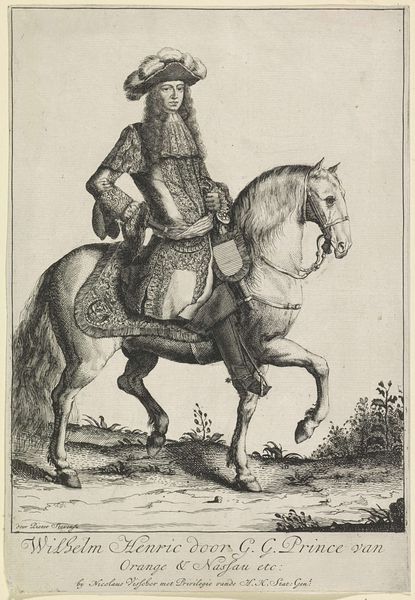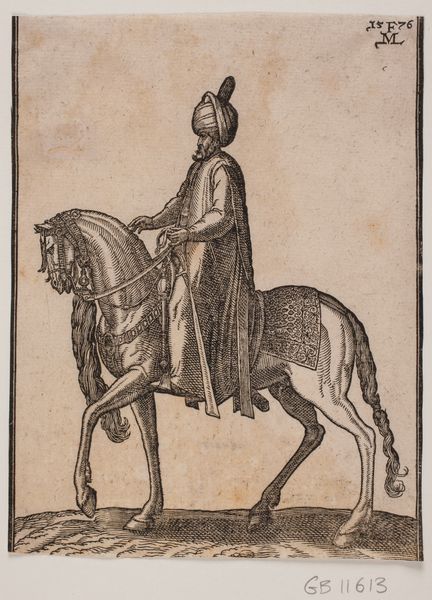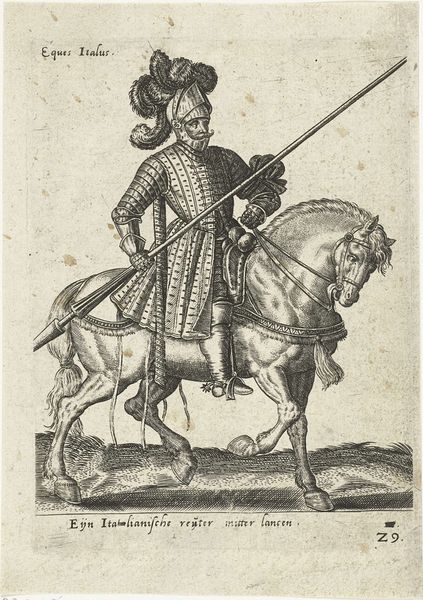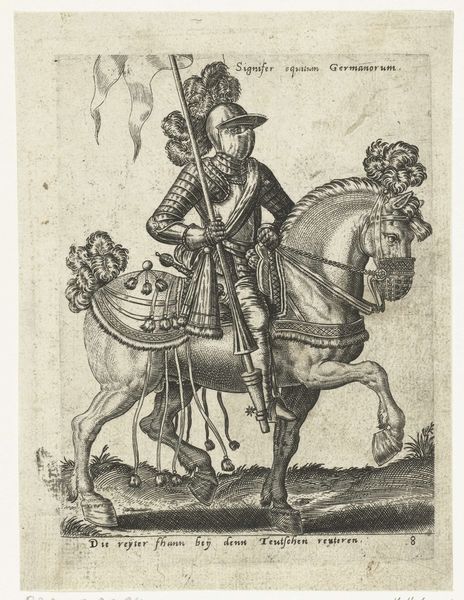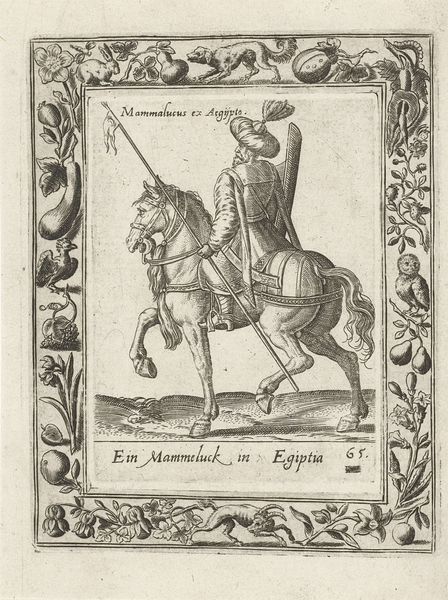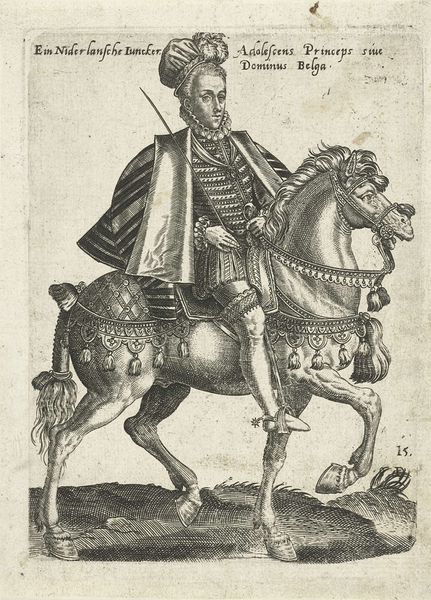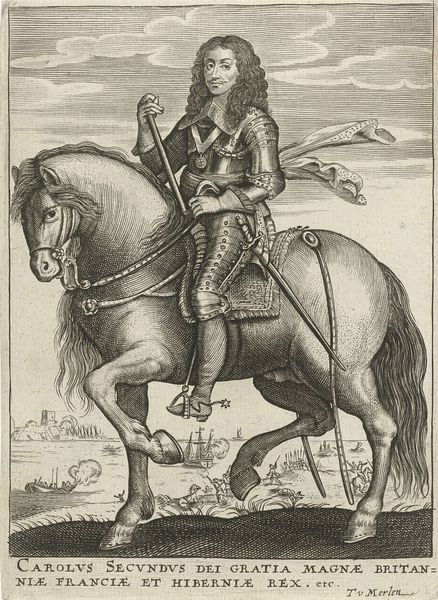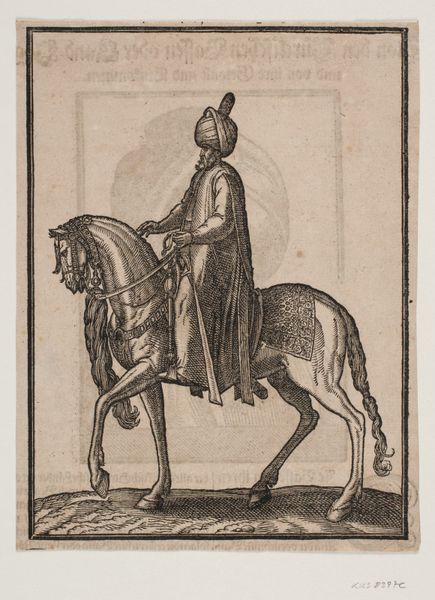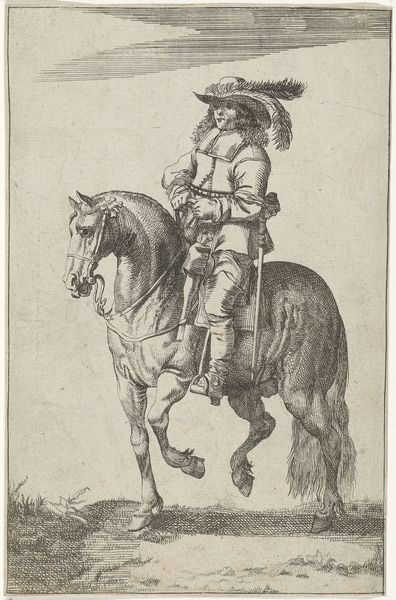
print, engraving
#
portrait
# print
#
landscape
#
mannerism
#
figuration
#
history-painting
#
northern-renaissance
#
engraving
#
realism
Dimensions: height 142 mm, width 102 mm
Copyright: Rijks Museum: Open Domain
Curator: Look at this engraving, "Young German Rider" from 1577, created by Abraham de Bruyn. I find the details fascinating. Editor: The texture jumps out immediately. The stark contrasts, the rigidity of the rider's posture, it's quite arresting, don’t you think? A definite sense of Northern Renaissance realism clashing with a nascent Mannerist flair. Curator: Absolutely, that clash defines the art. What draws me is the printmaking process. How does de Bruyn create such texture with mere lines? What kind of tools were employed? Who printed it, who sold it? Consider also, prints democratized images; they were accessible across social classes. Editor: A fascinating point. And if we consider the image itself: Who is this “young” rider? What power structures is he enacting? How does his dress signify wealth and military might, or merely aspirational bourgeois desires of the era? Curator: The intersection of function and form. His outfit, surely expensive, but also designed for protection, for war. That helmet is not merely decorative, it served a purpose. Consider the economics of crafting armor, the specialized labor… Editor: Precisely. What's being produced, but equally *who* is producing. And how that informs the image. He seems almost frozen, less like a dynamic leader and more like a commodity display for a rising merchant class. There’s tension here. Curator: The horse, too, its musculature and the detail on its tack reveal careful observation. We might wonder about the engraver’s own relationship with horses and with the aristocratic sphere he depicts. It also suggests access to the lifestyle even as it potentially idealizes it. Editor: Indeed. And that idealization underscores power dynamics. Consider how this image would reinforce existing social stratifications or even attempt to subvert them depending on the viewer. A constant dialogue of what's portrayed, and what's intentionally obscured. Curator: We see a snapshot into 16th century life in material culture. Examining de Bruyn's choice of lines, his tools, and how he leveraged those material to reach such audiences. It's all right there in the print itself. Editor: Ultimately, this isn't just an image, but an entry point. We examine history, power and the beginnings of capitalism and can see the material realities in ink and paper. Curator: Precisely! A portal from here to then. Editor: Quite so, quite so.
Comments
No comments
Be the first to comment and join the conversation on the ultimate creative platform.




